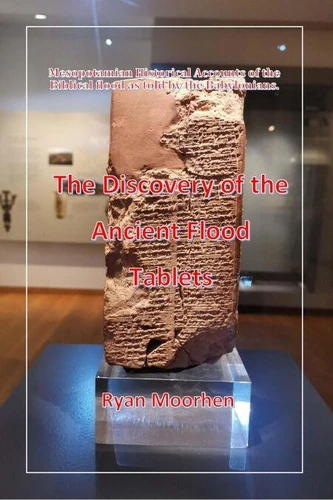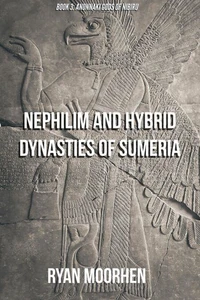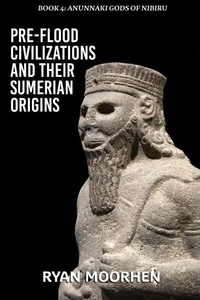The Discovery of the Ancient Flood
Par :Formats :
Disponible dans votre compte client Decitre ou Furet du Nord dès validation de votre commande. Le format ePub est :
- Compatible avec une lecture sur My Vivlio (smartphone, tablette, ordinateur)
- Compatible avec une lecture sur liseuses Vivlio
- Pour les liseuses autres que Vivlio, vous devez utiliser le logiciel Adobe Digital Edition. Non compatible avec la lecture sur les liseuses Kindle, Remarkable et Sony
 , qui est-ce ?
, qui est-ce ?Notre partenaire de plateforme de lecture numérique où vous retrouverez l'ensemble de vos ebooks gratuitement
Pour en savoir plus sur nos ebooks, consultez notre aide en ligne ici
- FormatePub
- ISBN978-1-393-10888-7
- EAN9781393108887
- Date de parution12/03/2021
- Protection num.pas de protection
- Infos supplémentairesepub
- ÉditeurRelay Publishing
Résumé
In the spring of 1852, Layard was obliged to close his excavations for want of funds, and he returned to England with Rassam, leaving all the northern half of the great mound of Kuyûnjik unexcavated. He resigned his position as Director of Excavations to the British Museum's Trustees, and Colonel (later Sir) H. C. Rawlinson, Consul-General of Baghdâd, undertook to direct any further excavations that might be possible to carry out later on.
During the summer, the Trustees received a further grant from Parliament for excavations in Assyria, and they dispatched Rassam to finish the exploration of Kuyûnjik, knowing that the lease of the mound of Kuyûnjik for excavation purposes which he had obtained from its owner had several years to run. When Rassam arrived at Môsul in 1853 and was collecting his men for work, he discovered that Rawlinson, who knew nothing about the lease of the mound which Rassam held, had given the French Consul, M.
Place, permission to excavate the northern half of the mound, i.e., that part of it which he was most anxious to excavate for the British Museum. He protested but in vain and, finding that M. Place intended to hold Rawlinson to his word, devoted himself to clearing out part of the South West Palace which Layard had attacked in 1852.
During the summer, the Trustees received a further grant from Parliament for excavations in Assyria, and they dispatched Rassam to finish the exploration of Kuyûnjik, knowing that the lease of the mound of Kuyûnjik for excavation purposes which he had obtained from its owner had several years to run. When Rassam arrived at Môsul in 1853 and was collecting his men for work, he discovered that Rawlinson, who knew nothing about the lease of the mound which Rassam held, had given the French Consul, M.
Place, permission to excavate the northern half of the mound, i.e., that part of it which he was most anxious to excavate for the British Museum. He protested but in vain and, finding that M. Place intended to hold Rawlinson to his word, devoted himself to clearing out part of the South West Palace which Layard had attacked in 1852.
In the spring of 1852, Layard was obliged to close his excavations for want of funds, and he returned to England with Rassam, leaving all the northern half of the great mound of Kuyûnjik unexcavated. He resigned his position as Director of Excavations to the British Museum's Trustees, and Colonel (later Sir) H. C. Rawlinson, Consul-General of Baghdâd, undertook to direct any further excavations that might be possible to carry out later on.
During the summer, the Trustees received a further grant from Parliament for excavations in Assyria, and they dispatched Rassam to finish the exploration of Kuyûnjik, knowing that the lease of the mound of Kuyûnjik for excavation purposes which he had obtained from its owner had several years to run. When Rassam arrived at Môsul in 1853 and was collecting his men for work, he discovered that Rawlinson, who knew nothing about the lease of the mound which Rassam held, had given the French Consul, M.
Place, permission to excavate the northern half of the mound, i.e., that part of it which he was most anxious to excavate for the British Museum. He protested but in vain and, finding that M. Place intended to hold Rawlinson to his word, devoted himself to clearing out part of the South West Palace which Layard had attacked in 1852.
During the summer, the Trustees received a further grant from Parliament for excavations in Assyria, and they dispatched Rassam to finish the exploration of Kuyûnjik, knowing that the lease of the mound of Kuyûnjik for excavation purposes which he had obtained from its owner had several years to run. When Rassam arrived at Môsul in 1853 and was collecting his men for work, he discovered that Rawlinson, who knew nothing about the lease of the mound which Rassam held, had given the French Consul, M.
Place, permission to excavate the northern half of the mound, i.e., that part of it which he was most anxious to excavate for the British Museum. He protested but in vain and, finding that M. Place intended to hold Rawlinson to his word, devoted himself to clearing out part of the South West Palace which Layard had attacked in 1852.


















